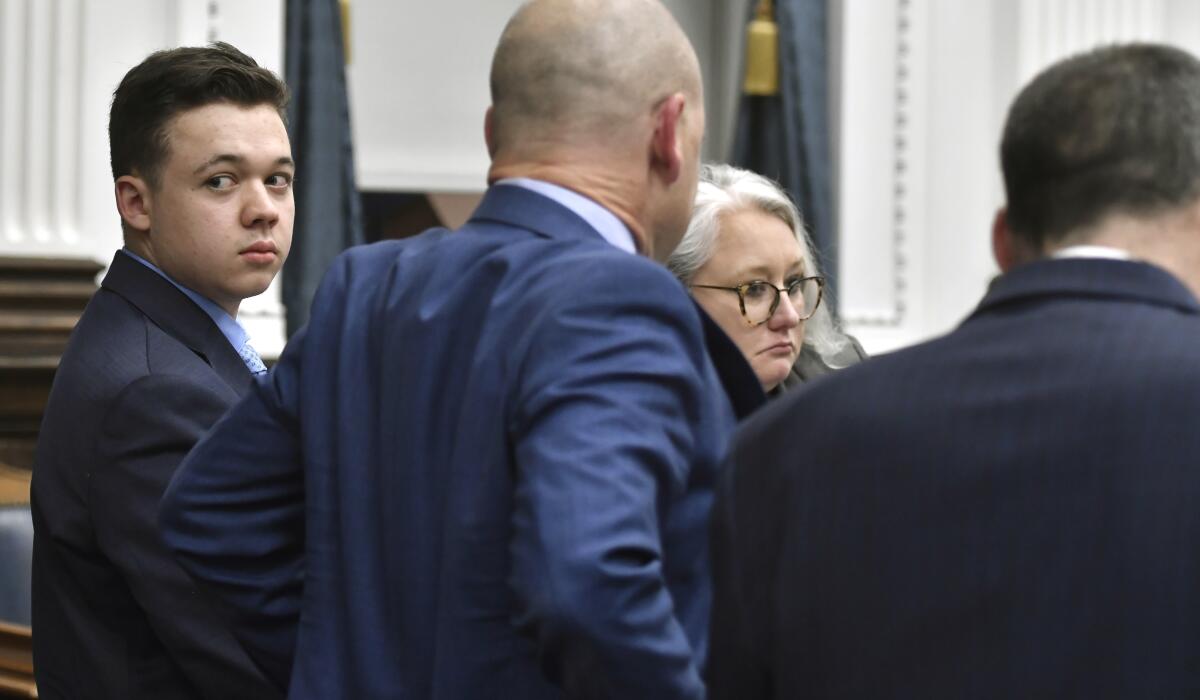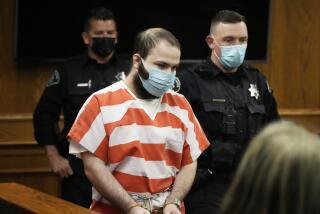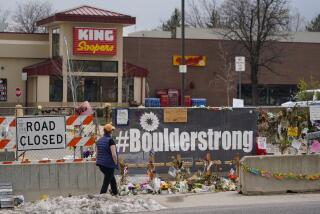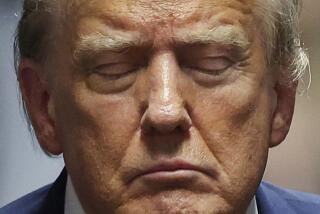Rittenhouse lawyers ask judge to declare mistrial over video

KENOSHA, Wis. — Kyle Rittenhouse’s attorneys asked the judge on Wednesday to declare a mistrial, saying they received an inferior copy of a key video from prosecutors and would have approached his defense differently if they had received the higher-quality video earlier.
Judge Bruce Schroeder did not immediately rule on the request, which came after jurors, deliberating for a second day in Rittenhouse’s murder trial, asked to review video evidence.
Defense attorney Corey Chirafisi said Rittenhouse’s team initially received a compressed version of a video taken by drone that prosecutors played for jurors during closing arguments. Prosecutors said it showed Rittenhouse pointing his gun at protesters before being chased by the first man he shot and killed during a night of turbulent street protests against racial injustice in Kenosha in the summer of 2020.
Rittenhouse, 18, faces life in prison if convicted on the most serious charge for using an AR-style semiautomatic rifle to kill two men and wound a third. The former police youth cadet is white, as were those he shot.
Rittenhouse testified that he acted in self-defense, while prosecutors argued that he provoked the violence. The case has become a flashpoint in the U.S. debate over guns, racial justice protests, vigilantism, and law and order.
Jurors were weighing charges against Rittenhouse for a second day after failing to reach a swift verdict Tuesday on whether he was the instigator of the bloodshed or a concerned citizen who came under attack while trying to protect property.
About two hours into deliberations Wednesday, jurors asked to view video shown earlier in the trial.
Prosecutor Thomas Binger said they should be able to view any video as many times as they wanted, and the judge seemed to agree.
“Sometimes there is one piece of evidence that is absolutely critical.... To me, if they want to watch it 100 times, that’s them,” Schroeder said.
But defense attorneys said they would object to the jury viewing the drone video that prosecutors had played.
Chirafisi said the defense didn’t get the same quality of video until after the evidentiary portion of the case was closed.
He said the defense was asking for a “level, fair playing field” and requesting a mistrial “without prejudice,” meaning prosecutors could try Rittenhouse again if the judge were to grant the request.
Prosecutors countered that the jury saw the highest-quality version of the video during the trial and that there were no objections when it was played.
“We’re focusing too heavily on a technological glitch,” prosecutor James Kraus said, adding that it wasn’t prosecutors’ fault that the defense received the file in compressed form.
Kraus said the video is key because it proves that Rittenhouse lied on the stand when he said he didn’t point his rifle at protesters. Prosecutors say he did point his rifle, which provoked protesters, including Joseph Rosenbaum, who then chased Rittenhouse and was shot and killed by him.
“I do not believe ... an unknown technical incident should result in a mistrial,” Kraus said.
Both sides agreed with loading the videos that jurors wanted to see onto a computer for them to view in the jury room.
Schroeder said he had his “qualms” about admitting the video during the trial, but because it was shown in court “we might as well follow through with it, and if they’ve got everything correct and reliable, then they won’t have a problem. If it isn’t, it’s going to be ugly.”
Earlier in the day, the judge said he would “think long and hard” about allowing televised trials in the future. He took exception to news stories about him not allowing the men Rittenhouse shot to be called victims; letting Rittenhouse play a minor role in determining which jurors were alternates; and not yet ruling on the defense motion for a mistrial.
Schroeder said he hadn’t read the motion because he just received it on Tuesday.
“It’s just a shame that irresponsible statements are being made,” Schroeder said of law professors’ comments in a Milwaukee Journal Sentinel story about him not having ruled on the mistrial motion.
The case went to the anonymous jury after Schroeder allowed Rittenhouse to reach into a raffle drum and draw numbered slips to determine which of the 18 jurors who sat through the case would deliberate and which would be dismissed as alternates.
That task is usually performed by a court clerk, not the defendant. Schroeder said he’d had defendants do it for at least 20 years.
“I would admit that there are not a large number of courts that do that — maybe not any,” Schroeder said Wednesday.
The jury of 12 deliberated for a full day Tuesday.
Prospective jurors were not asked to identify their race during the selection process, and the court did not provide a racial breakdown, but the jury appeared to be overwhelmingly white.
Though protests have been generally muted around the courthouse, on Wednesday a man arrived carrying a long rifle and wearing what appeared to be body armor. He left after being approached by police, returning a short time later without the gun. The man had spent Tuesday shouting anti-Black Lives Matter statements through a megaphone, and was involved in a confrontation that day with another protester.
Democratic Gov. Tony Evers, who faced criticism over his response to the Kenosha protests in 2020, urged calm as the jury deliberated. He announced last week that 500 members of the Wisconsin National Guard would stand ready for duty in Kenosha if needed.
Rittenhouse was 17 when he went to Kenosha from his home in Antioch, Ill., in what he said was an effort to protect property from rioters in the days after a Black man, Jacob Blake, was shot by a white Kenosha police officer.
In a fast-moving series of clashes in the streets, Rittenhouse shot and killed Rosenbaum, 36, and Anthony Huber, 26, and wounded Gaige Grosskreutz, now 28.
During closing arguments Monday, prosecutor Thomas Binger called Rittenhouse a “wannabe soldier,” saying he set the deadly chain of events in motion by bringing a rifle to a protest and pointing it at people.
Rittenhouse lawyer Mark Richards argued that Rittenhouse was ambushed by a “crazy person” — Rosenbaum.
Rittenhouse testified that Rosenbaum chased him down and made a grab for his rifle, causing the teen to fear the weapon was going to be used against him. His account of Rosenbaum’s behavior was largely corroborated by video and some of the prosecution’s own witnesses.
Huber was gunned down after he was seen on video hitting Rittenhouse with a skateboard. And Grosskreutz admitted he had his own gun pointed at Rittenhouse when he was shot.
In his instructions to the jury, Schroeder said that to accept Rittenhouse’s claim of self-defense, the jurors must find that he believed there was an unlawful threat to him and that the amount of force he used was reasonable and necessary.
More to Read
Sign up for Essential California
The most important California stories and recommendations in your inbox every morning.
You may occasionally receive promotional content from the Los Angeles Times.










